Are tiny yellow bugs munching on your garden? Don’t know what to do about it? No worries! I will help you get rid of these mysterious invaders!
I experienced the same problem not long ago when these tiny insects started eating my precious rose bushes. I immediately jumped into action to save my roses before it was too late. I am happy to tell you that I have successfully put a stop to the infestation. Now, I would love to share my tips with you!
Contents
Everything You Need To Know About Tiny Yellow Bugs
What Do They Look Like?
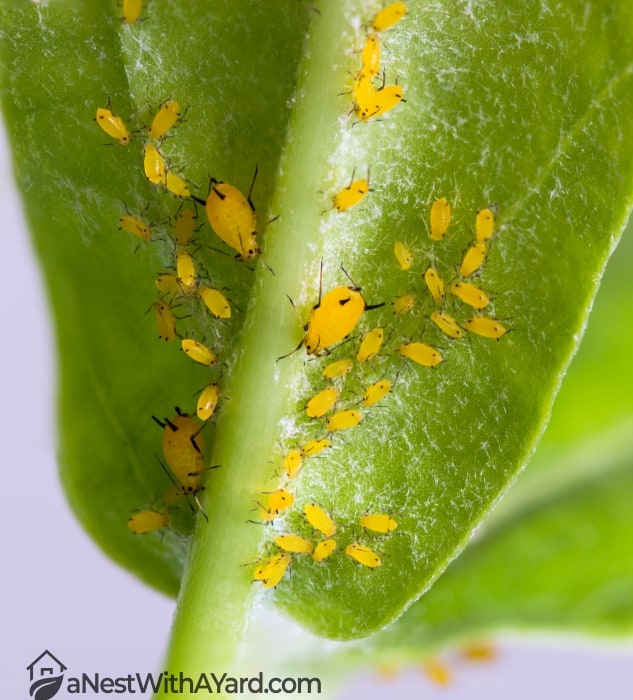
The first step to successfully eradicating the mysterious yellow insect is correctly identifying it!
The tiny yellow bugs that are munching on your garden are called yellow aphids. They measure only ¼ inch in size and are luckily visible to the naked eye. You may have to look closely at the damaged leaves and deformed flowers to see them, but rest assured they are hiding somewhere!
Their size is not their only trademark. Aphids can also be easily recognized by their pear-shaped body, long antennae, and cornicles (protruding dorsal tubes) that are darker at the ends.
Their yellow color makes them stand out against the green background of plants. But depending on the species, aphids can also be light green, pink, gray, brown, and black.
What about white bugs in houseplant soil? You can read more about them here!
How Do Yellow Bugs Destroy Plants?
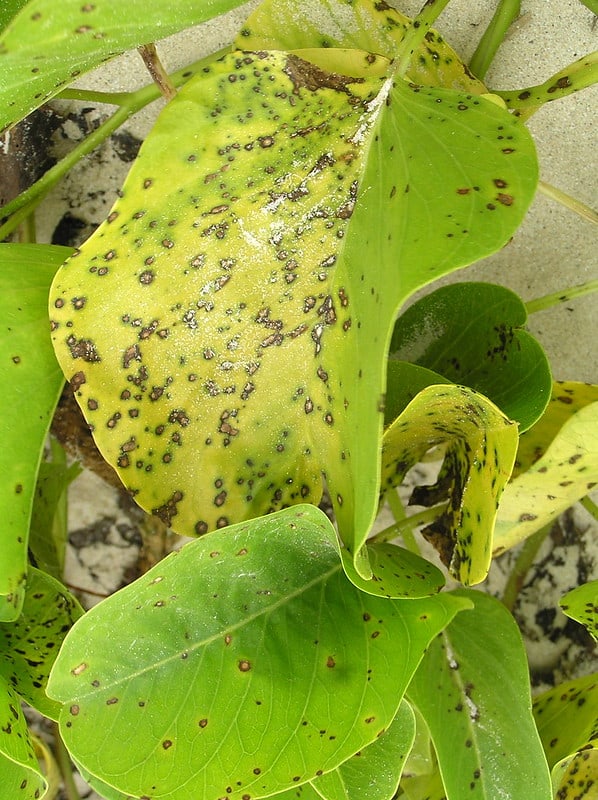
These yellow bugs are extremely resilient. They can live in almost all environments but aphid populations grow substantially in spring and fall. Left uncontrolled, their colonies can increase by tens of thousands, if not more.
Based on my experience, these seemingly powerless bugs can damage vegetation within days when working in big groups. They especially like eating vegetable leaves, flowering plants, shrubs, and trees.
Aphids feed on plant nectar and juices. Their eating habits dehydrate the plant and cause discoloration of the leaves. Not only that! The worst thing is they can spread bacterial and fungal infections to healthy plants!
Now you know how harmful these little yellow bugs can be. The sooner you put a stop to the infestation, the better.
What Damage Aphids Can Cause In Your Garden?
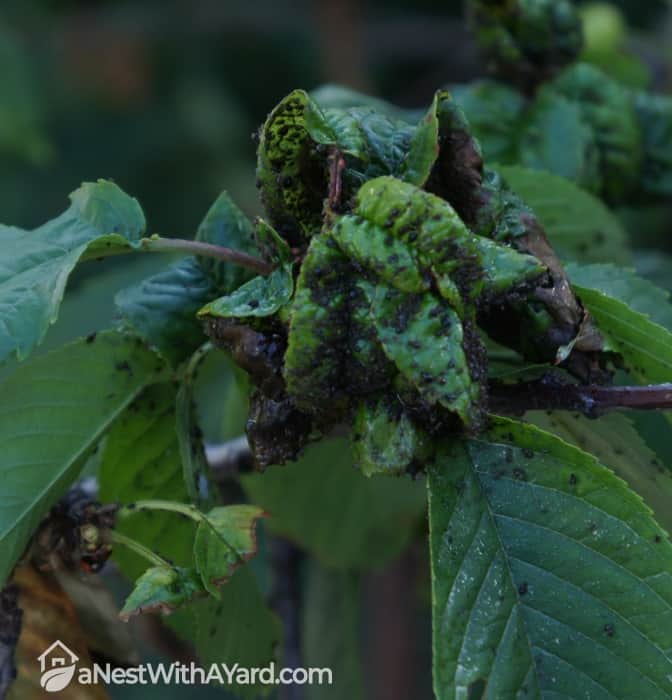
Yellow bugs can damage your vegetable, fruiting and ornamental plants in different ways. These are the common signs of having yellow pests in your garden:
Fungal Growth
Aphids secrete a sticky substance called honeydew whenever they feed. The problem is that honeydew can turn into a sooty mold, causing stems and leaves to turn black. If you detect honeydew on parts of the plants, know that the yellow bugs have been at work.
Discolored Leaves
Large aphid colonies can quickly suck the life out of a plant. In my experience, the first thing you’ll notice is the leaves starting to turn yellow. Then, leaves stop growing or simply curl up. That’s because yellow bugs feed on plant juices that are essential for their well-being.
Deformed & Stunted Flowers & Fruit
Yellow bugs distort the appearance of flowers and fruits in the same manner as they destroy leaves. They simply can’t resist the sweet nectar of flowering and fruiting plants. Unfortunately, they can quickly mess up a beautiful flower bed or ruin a harvest by deforming the plant and inhibiting new growth.
7 Ways To Kill Tiny Yellow Bugs In Your Garden
Luckily, there are many ways to get rid of tiny yellow aphids, but some methods are easier than others.
After the tests I’ve done, I narrowed it down to these 7 most effective ways to treat aphid infestation. You can try one or more of these methods to see which one works best for you!
Remove Yellow Bugs Manually
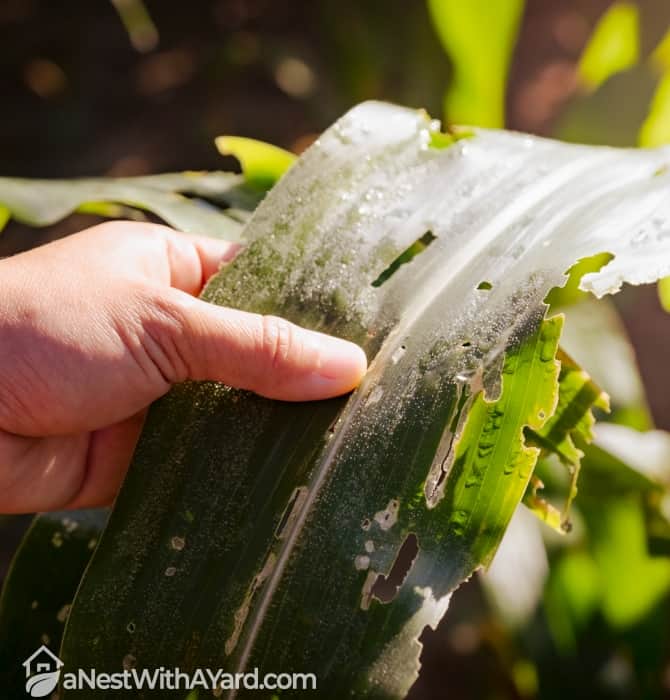
Aphids are pretty small, but they can still be physically removed by only using your bare hands. In my opinion, the easiest way to remove them is to pinch them or brush them off the stems and leaves.
I suggest you wear gardening gloves while eliminating these tiny bugs since they can cause skin irritation and rash.
Removing yellow bugs by hand is easy when there aren’t many of them. If you notice that the bugs are primarily located on one or two stalks, it is easier to prune the affected part. Pour soapy water on the pruned branch to kill the bugs. Don’t forget to throw infested branches far away from your garden, as well!
If the aphids keep reappearing no matter how many times you remove them, you may want to look at your mulch. Many insect species and other pests love to reside under it.
Use Water Pressure
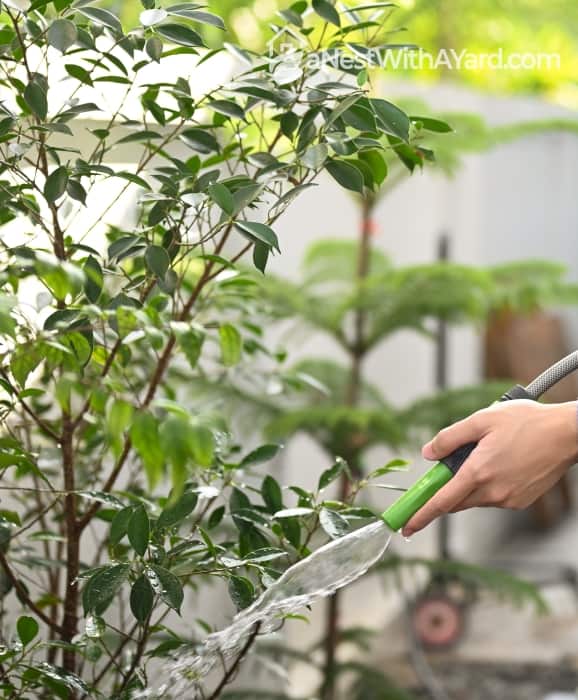
If you are struggling to remove tiny yellow insects and their eggs with your hands, you can use water pressure instead!
Simply aim your water hose at the creepy crawlies to knock them off branches. Be careful not to damage your plants while spraying them! This aphid control method works best on mature plants.
Try Neem Oil

If you would like to get rid of aphids without using harsh chemical control, you can try using neem oil.
Dilute the oil in some water and liberally spray it over plants. The active ingredient azadirachtin will naturally repel aphids and other insects including ants, beetles, cabbage worms, leaf miners, and mealy bugs.
This video shows you how to use neem oil to control pests and plant diseases:
Use Soapy Water
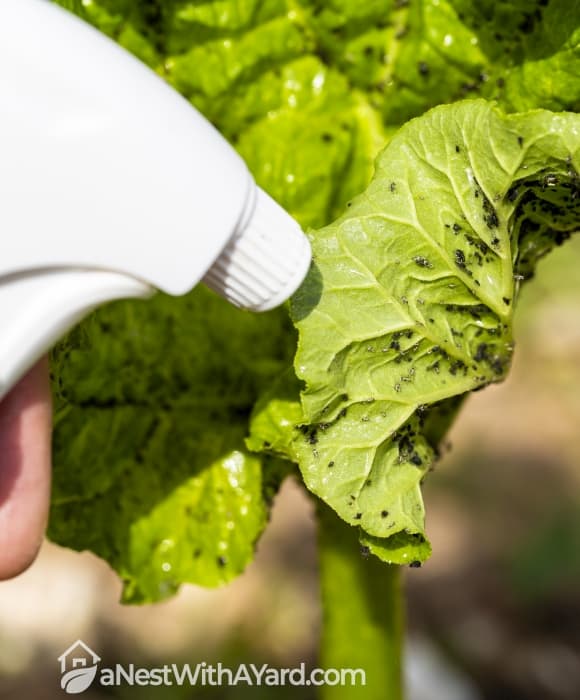
Ever tried removing aphids with soapy water? This simple solution works wonders!
Mix a couple of tablespoons of mild dish soap in a small bucket of water. You can add a dash of cayenne pepper too! Apply the solution to the affected leaves and stalks of the plants. In my personal experience, it is much easier to use a spray bottle for this project. It is less messy!
Introduce Natural Enemies
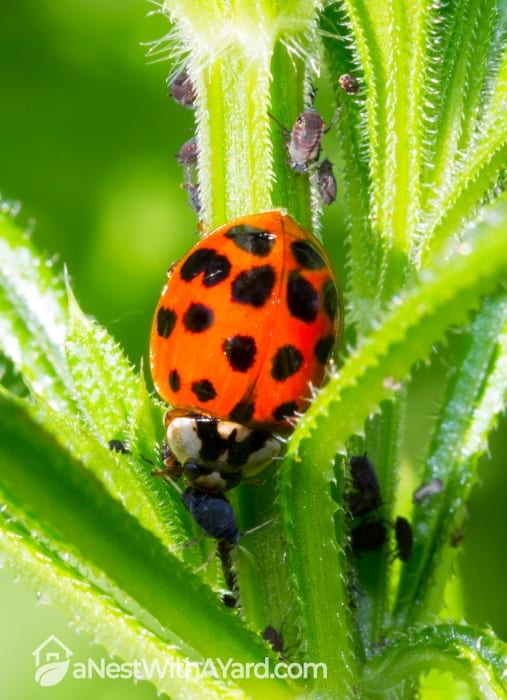
The most natural way to fight aphid infestation is to introduce predator insects and birds in your garden.
Based on my experience, ladybugs and lacewings do the best job of keeping the aphid population in check. You can buy these beneficial insects at your local gardening store.
You can also encourage titmice, wrens, and chickadees to nest in your shrubs and trees by offering them some food. They love to snack on aphids too!
Plant Herbs Aphids Hate
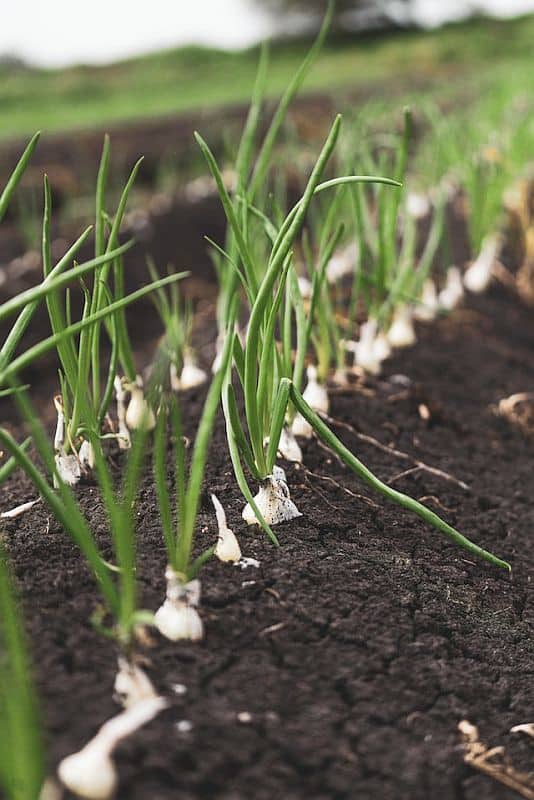
Another environmentally friendly way to get rid of tiny yellow aphids is to use aromatic herbs to your advantage. Aphids dislike oregano, catnip, onions, and garlic. Don’t hesitate to plant them near more valuable plants. At the end of the day, you can use these herbs in your kitchen as well!
Use Insecticidal Soap
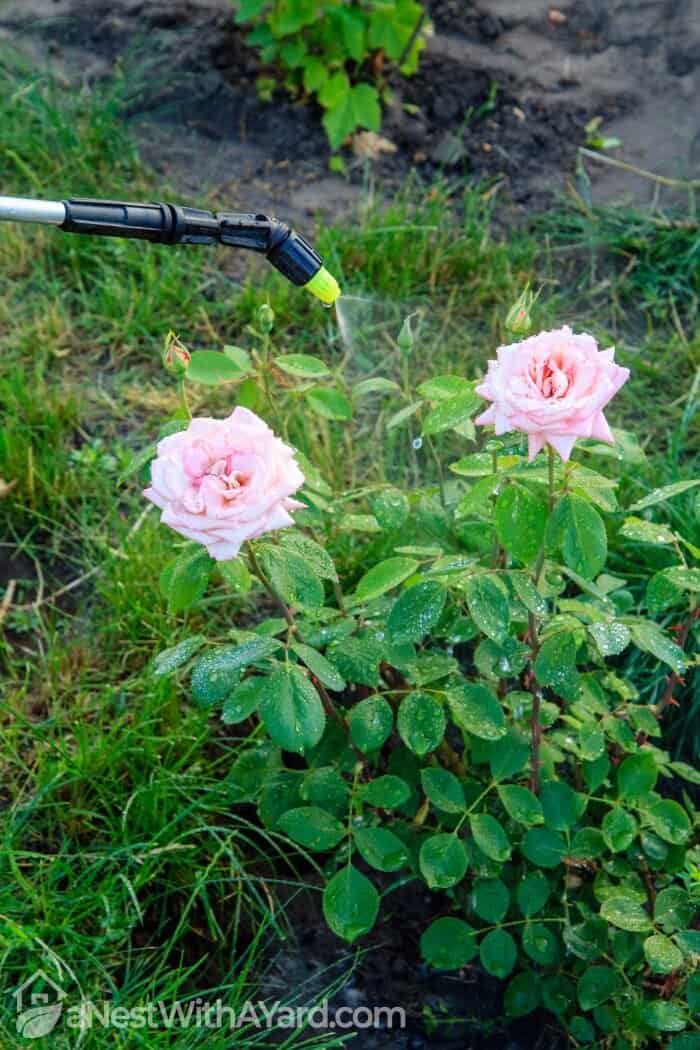
If none of the organic methods presented above work for you, you still have the option to use an insecticidal soap from the store. They are highly effective if used correctly.
If you decide to go this route, just make sure to buy the correct product. Read the usage instructions on the packaging carefully, so you don’t accidentally kill beneficial insects in your garden.
FAQs
What are these tiny yellow bugs on my plant?
These tiny yellow bugs on your plant are called aphids. They love to hide under leaves and inside flowers. They cause damage to the vegetation by feeding on plant juices and depriving them of essential nutrients.
Do Aphids damage plants?
Aphids damage plants when working in large groups. They cause damage by feeding on plant juices. They can turn leaves yellow and stunt new shoots. They secrete honeydew, which often turns into sooty mold fungus.
Can plants recover from aphids?
Plants can recover from aphids if they are treated effectively and if there is time for new growth to come in. You can speed up the recovery process by using a good fertilizer and by pruning infected leaves and stems.
Do aphids attack all plants?
Aphids attack nearly all plants since they aren’t picky eaters. They especially like to feast on tomato buds, roses, sunflowers, plums, apples, peaches, cherries, blackberries, and other juicy fruits and berries.
You Can Still Save Your Precious Garden
I told you not to worry! There are many different ways to stop aphid infestation and save your precious garden in time!
I prefer using noninvasive eradication methods that are friendly to the environment, like planting onions and garlic under my roses.
What is your preferred method? Let me know in the comments below, and feel free to ask me any questions. I would love to hear from you.
